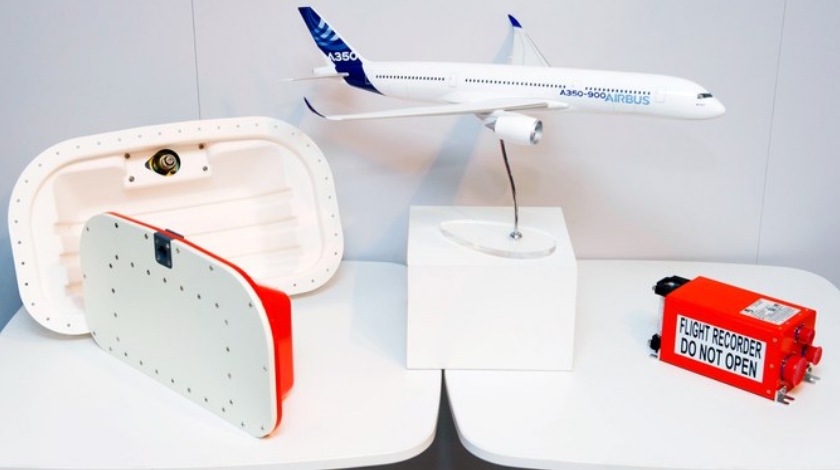Photo: australianaviation.com.au
Reading Time: < 1 minuteAirbus will fit deployable flight data and cockpit voice recorders on new A350 XWB aircraft beginning in 2019 and on the rest of its long-range fleet soon thereafter.
A deployable flight data recorder is designed to separate itself from the aircraft in a crash. They are particularly useful for crashes over water where accessing or even finding aircraft wreckage may be difficult or impossible.
Although exotic in the commercial market, they have a multi-decade history in the military market. The Boeing F/A-18 Hornet is outfitted with a deployable flight incident recorder system that is ejected from the aircraft shortly after the pilots, which has resulted in several recoveries of recorders that would not otherwise have been possible.
The floating data recorders, made by Leonardo with aircraft integration provided by L3, will separate from the aircraft if they detect submersion in water or “significant structural deformation”.
Charles Champion, executive vice president of engineering at Airbus Commercial Aircraft, said, “Airbus, together with L3 Technologies and Leonardo DRS, is very pleased to be leading the commercial aircraft industry in implementing into our aircraft new deployable flight data and 25-hour voice recording capability.”
The new system is a response to ICAO requirements to improve the identification and location of downed aircraft.
The new rules were promulgated in response to the loss of Malaysian Airlines Flight 370 in 2014, whose flight data recorders remain missing after tens of millions spent searching, as well as the $40 million and two years spent to recover the flight data recorders from Air France 447, which crashed in the Atlantic Ocean in 2009.

